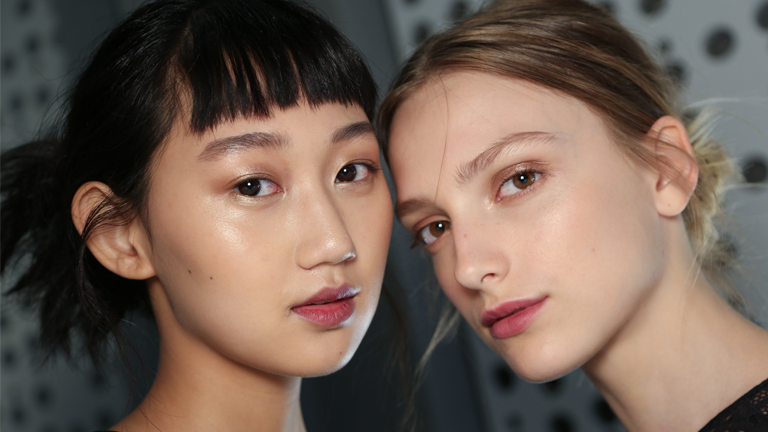Exploring the Future Growth Potential of the Beauty Market
In 2022, the beauty market, encompassing skincare, fragrance, makeup, and hair care, generated approximately $430 billion in revenue. Today, beauty is trending upward in other categories as well. It’s one of the industries poised for recovery amidst the global economic crisis and macroeconomic turmoil.

Summary of Content: Localized strategies in a global context 5 breakthrough factors for building a competitive brand Beauty is now an industry where many, from top financiers to A-list celebrities, want to participate. Following the recovery since the peak of the COVID-19 pandemic, the beauty market is expected to reach around $580 billion by 2027, with an anticipated annual growth rate of 6%. This figure is comparable to or slightly higher than other consumer segments such as apparel, footwear, eyewear, pet care, food, and beverages.
In a dynamic and breakthrough-prone segment like this, the beauty industry is reshaping products, channels, and markets to fit today’s landscape. Consumers, especially the younger generation, will drive this change as their definition of beauty shifts from sustainability to the role of influencers. Additionally, the premium segment is predicted to grow at an annual rate of 8% from 2022 to 2027, as consumer behavior shifts and their spending increases, particularly in fragrance and makeup categories.
Amidst the current landscape, the market will become even more competitive as more brands emerge, posing new challenges. This event will prompt existing brands and retailers to adapt. In a McKinsey survey in 2023, 42% of consumers across China, France, Germany, Italy, the UK, and the US stated they enjoy trying new brands and shopping at various price points. Furthermore, both online and offline stores influence their shopping behavior. Their omnichannel shopping preferences are expected to continue driving the online transition of traditional brands and independent labels.
E-commerce in the beauty sector has nearly quadrupled from 2015 to 2022, and its market share now exceeds 20%. This compares to a 30% market share for e-commerce in 2022 in apparel and footwear and around 65% in toys and games.
Other factors contributing to growth include the expansion of beauty services by online giants like Amazon in the US and Tmall in China. E-commerce is expected to remain the fastest-growing sales channel, at a rate of 12% annually from 2022 to 2027, but traditional channel growth rates are expected to increase post-pandemic as customers still want to explore and sample products in-store. However, grocery stores may continue to lose market share globally.
Localized strategies in a global context
When establishing a new brand, they also face competition from both domestic and international brands
In the past, brands employed uniform strategies, but recently, they’ve become less effective, requiring brands to reassess their global strategies and make more appropriate adjustments.
Geographical diversification will become more crucial than ever. Recently, new brands may focus their footprint on the top two countries in the industry: China and the US. Both will remain “big cakes” for the industry, with the beauty market expected to reach $96 billion in China and $114 billion in North America by 2027.
However, in both markets, individual brands will struggle to grow, especially due to fierce competition both domestically and internationally. Meanwhile, other regions like the Middle East and India will be “targets” for long-term growth, offering different potentials. Hence, many brands will pivot to localized strategies depending on different regions. Above all, the premium and super-premium beauty market segments truly have the potential to double, from about $20 billion currently to around $40 billion by 2027.
5 breakthrough factors for building a competitive brand
The coming years will be a “golden” period, full of new opportunities and challenges. High-profitability, with EBITDA margins reaching up to 30%, will continue to attract new founders and investors to the field. This article proposes 5 unique differentiating values to compete with the saturated market and increasingly sophisticated consumers.
Growth maps have changed: slower growth in China along with increasing local competition means it will no longer be the industry’s target. The US market will become more crucial, with strong growth rates, especially in the coming years. This market will be a competitive battleground for established brands and a promising greenfield for newcomers. The Middle East is expected to drive growth during the same period, and India is expected to emerge as a new hot spot in the long-term “race.”
“Health is wealth”: when consumers not only want to look good but also feel comfortable. The boundary between beauty and health is increasingly blurred, and the market opportunity is expected to reach nearly $2 trillion globally. Health-inspired products – such as skincare and makeup with probiotic and Ayurvedic ingredients, supplements, and beauty devices like LED masks – have attracted the attention of consumers who want to self-care more in their daily routines after the pandemic. This trend is an untapped opportunity and will be profitable for those who capture it.
The influence of Generation Z: they scrutinize brands as part of their value-seeking process. Nearly half of Generation Z respondents in a survey said they researched product ingredients and benefits extensively before purchasing. In addition to product effectiveness and transparency, Gen Z demands brands demonstrate credibility in campaigns and products. Besides focusing on sustainability, diversity, and inclusivity, Gen Z also values authentic brand imagery, compelling stories, and always seeks consumer access within a large community.
Scaling adjustments: although it’s a promising market, many still struggle to achieve target growth rates. Of the 46 brands established in or after 2005 with global retail sales of $50 million to $200 million in 2017, only 5 brands surpassed $250 million in global retail sales five years later. Only 2 brands achieved global retail sales exceeding $750 million. To successfully scale, brands must focus on expanding omnichannel and internationalization.

